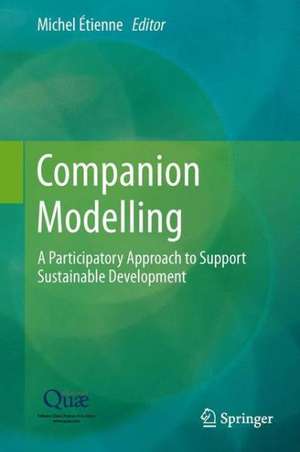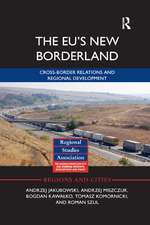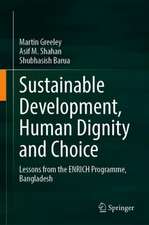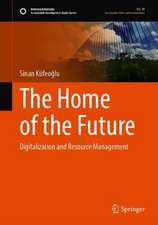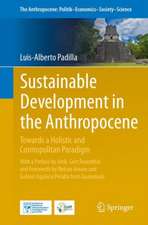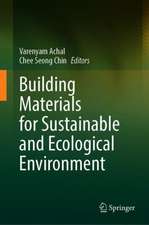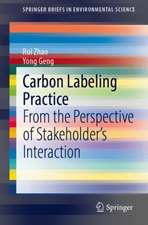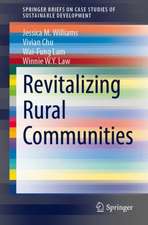Companion Modelling: A Participatory Approach to Support Sustainable Development
Editat de Michel Étienneen Limba Engleză Hardback – 8 ian 2014
The book includes 27 case studies and 7 teaching tools that describe the successful use of the approach in a variety of settings or teaching contexts. It is intended for researchers working on rural development or renewable resources management, as well as students and teachers.
| Toate formatele și edițiile | Preț | Express |
|---|---|---|
| Paperback (1) | 646.30 lei 6-8 săpt. | |
| SPRINGER NETHERLANDS – 17 sep 2016 | 646.30 lei 6-8 săpt. | |
| Hardback (1) | 652.64 lei 6-8 săpt. | |
| SPRINGER NETHERLANDS – 8 ian 2014 | 652.64 lei 6-8 săpt. |
Preț: 652.64 lei
Preț vechi: 767.81 lei
-15% Nou
Puncte Express: 979
Preț estimativ în valută:
124.90€ • 129.91$ • 103.11£
124.90€ • 129.91$ • 103.11£
Carte tipărită la comandă
Livrare economică 14-28 aprilie
Preluare comenzi: 021 569.72.76
Specificații
ISBN-13: 9789401785563
ISBN-10: 9401785562
Pagini: 416
Ilustrații: XII, 403 p. 72 illus., 35 illus. in color.
Dimensiuni: 155 x 235 x 28 mm
Greutate: 0.76 kg
Ediția:2014
Editura: SPRINGER NETHERLANDS
Colecția Springer
Locul publicării:Dordrecht, Netherlands
ISBN-10: 9401785562
Pagini: 416
Ilustrații: XII, 403 p. 72 illus., 35 illus. in color.
Dimensiuni: 155 x 235 x 28 mm
Greutate: 0.76 kg
Ediția:2014
Editura: SPRINGER NETHERLANDS
Colecția Springer
Locul publicării:Dordrecht, Netherlands
Public țintă
ResearchCuprins
Foreword.- Acknowledgements.- Introduction.- Chapter 1 Companion modelling: a method of adaptive and participatory research.- Chapter 2 The commodian stance: interpersonal skills and expertise.- Chapter 3 Models for sharing representations.- Chapter 4 Contexts and dependencies in ComMod processes.- Chapter 5 Power asymmetries in companion modelling processes.- Chapter 6 Assessment and monitoring of the effects of the ComMod approach.- Chapter 7 How do participants view the technologies used in companion modelling.- Chapter 8 ComMod: engaged research’s contribution to sustainable development.- Chapter 9 Learning about interdependencies and dynamics.- Chapter 10 The companion modelling approach, changing scales and multiple levels of organization.- Chapter 11 Transferring the ComMod approach.- Conclusion – Companion modelling: an adaptive approach?.- Appendix.- Descriptions of 27 case studies.- Description of games and models used in the companion modelling process.- References.- List of authors.
Notă biografică
Michel Étienne, director of research at the Ecodevelopment Unit of INRA at Avignon (France) is a plant ecologist and a modeller. He is one of the leaders of the ComMod group working on companion modelling. He has applied the approach to many sites in France and to several topics related to sustainable development including livestock farming and fire prevention, agricultural development and biodiversity conservation, forest management and landscape dynamics.
Textul de pe ultima copertă
Sustainable development, including how to involve stakeholders in deciding the future for the land where they live or work, is a crucial current issue. However, the meanings given to both terms – development and sustainable – are so diverse and controversial that a clear methodology is required to establish participatory approaches for the management of renewable natural resources. Companion modelling is one such approach. It is unique in its continuing involvement of stakeholders throughout the approach, the use of models as a way of eliciting representations of the issues at stake and the priority given to the collaborative understanding of the outputs from these models.
The book introduces the companion modelling approach by presenting the stance that underpins it, the methods and tools used with stakeholders and the specific role of models during the process. It addresses the means to deal with the different levels of decision-making and to take into account the various power relationships. It proposes a methodology to assess the impact of the approach on the stakeholders involved in the process.
The book includes 27 case studies and 7 teaching tools that describe the successful use of the approach in a variety of settings or teaching contexts. It is intended for researchers working on rural development or renewable resources management, as well as students and teachers.
The book introduces the companion modelling approach by presenting the stance that underpins it, the methods and tools used with stakeholders and the specific role of models during the process. It addresses the means to deal with the different levels of decision-making and to take into account the various power relationships. It proposes a methodology to assess the impact of the approach on the stakeholders involved in the process.
The book includes 27 case studies and 7 teaching tools that describe the successful use of the approach in a variety of settings or teaching contexts. It is intended for researchers working on rural development or renewable resources management, as well as students and teachers.
Caracteristici
A useful book for decision makers in drawing up strategies, defining research and development programme A reference for enhancing and developing commercial utilisations for these high-potential resources Includes supplementary material: sn.pub/extras
